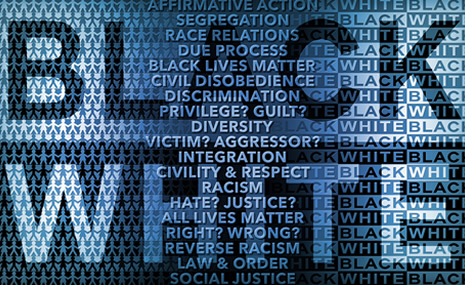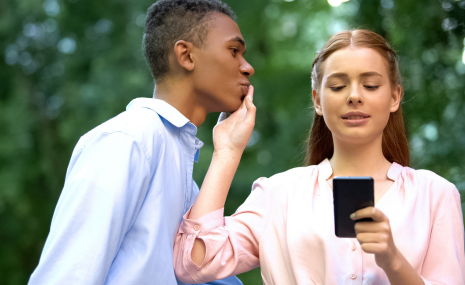Why Millennials Should Know About Jim Crow
 Jim Crow is a mocking slang used to describe a black man in the South, between the 1870s to 1960s. Any state law passed in the South that segregated blacks from whites came to be addressed and recognized by the term Jim Crow. White supremacy was the dominant factor behind this. Jim Crow spelt racial discrimination at its worst.
Jim Crow is a mocking slang used to describe a black man in the South, between the 1870s to 1960s. Any state law passed in the South that segregated blacks from whites came to be addressed and recognized by the term Jim Crow. White supremacy was the dominant factor behind this. Jim Crow spelt racial discrimination at its worst.
Keep scrolling to find out more…
Find your soulmate on Swirlr










The Jim Crow Origin
In the 20th century, racism was everywhere. It was as bad as having separate schools for blacks and whites, separate work rooms, doors, drinking fountains, parks, phone booths, streets, towns, separate bibles to swear in court, and separate books to use in schools... If only there could have been separate air to breathe and separate earths to live in.
Jim Crow touched every minute area of life as the term gained popularity.
Who Was Jim Crow?
Jim Crow wasn’t a real person. He was a theatre persona depicted by Thomas Dartmouth Rice, a white man of the 19th to 20th century. In his shows, Rice depicted Jim Crow as a shaggy-looking black man with a bent, crooked pose who sang a song entitled “Jump Jim Crow”.
Thomas’ inspiration for this character likely stemmed from travels in the South. He likely observed southern black slaves and probably took to mind a few traditional songs and dance steps of the African-American tradition.
His depiction of the black man came to be widely accepted by many whites whose concept of or an idea of who a black man should be was the Jim Crow persona.
What are Jim Crow Laws?
Jim Crow laws are simply rules, laws, and customs that segregated the blacks from the whites. Jim Crow segregation was synonymous with black segregation. These laws deprived and denied the blacks of their right and freedom. They were a reaction to the Reconstruction. Worse still, they were legal.
In 1890, they passed laws to prevent blacks from riding on the same railroads as whites in Louisiana. And as of 1896, public facilities were totally separated but yet described as “equal”. In 1898, a Mississippi law deprived blacks of their right to vote, sealing the fate of black Americans.
As much as Jim Crow laws didn’t account for all racial discrimination suffered by blacks, it influenced some unwritten rules that hung in the air, distinctly separating blacks from whites or as it were “whites” from “colored”.
In Richmond, Georgia, Louisiana, Virginia, South Carolina, and Los Angeles, there was public humiliation of people of color. The attack of racism was vicious and upfront; not hidden in words or subtle actions as is the case amongst millennials.
The 1920s to 1940s only saw the rise of new Jim Crow laws that further stood to make distinctions clear.
After World War II, the fight for freedom intensified and some lawmakers tried to revert racism but it is quite unfortunate that racism is an act rooted deep within the human heart, passed on subtly from one generation to another, not just an action that disappears because a written code says so.
Meanings behind the Jim Crow Story
The name Jim Crow itself has its own meaning. The ‘Jim’ in the name is short for Jimmy, and that simply refers to a crow bar. The term ‘Crow’ refers to black slaves; in fact, black slaves were called Crows since the early 1700s. In terms of Jump Jim Crow, farmers feed their crows corns socked in whiskey, the crows are drunk, they dance around and they are often beaten to death.
The Jim Crow Pose itself doesn’t have a recognized meaning. But many in different quarters have ascribed that the Jim Crow Pose is used by the man to describe the drunken state of crows while they are being beaten to death.
Why Do Millennials Need To Know About Jim Crow?
As much as millennials are taught about equality in schools and racism said to be a thing of the past, it is more of claiming to be different when in words and actions, they are not.
Mychal Denzel Smith at PBS explained that millennials might think that they are post-racial but in actuality have learned none of the skills that make them worthy of being classified as such. They may choose to be colorblind and seem to accept diversity. But in their speech, they are yet to learn the language of anti-racism. Millennials simply do not know the difference between being blind to color and being anti-racist.
Martin Luther King Jnr. hoped for a world free of racism where we stood on boxes of different heights though we are of different heights just to level up. What we see among millennials is standing on boxes of same heights even as we are of different heights; the difference remains. He dreamed of a time when children of different races could be united in thought and action, where they saw the difference in color but that was all it was, a difference in color, where each person accepted the other without prejudice.
His dreams were not fulfilled in choosing to be color blind and hoping racism would just go away, it would be fulfilled when concerted efforts are made to let it go; when start believing love is the colors.
The fight against racism is an ongoing one
Even if millennials choose to be blind to racism, it doesn’t mean that the fight is over. If anything, Jim Crow laws still stand. Black segregation still exists. That means the Jim Crow origin should still be studied by millennials. They only can tell if we have made real progress. People are overlooking it and not tackling it. It lives on because color still determines what jobs will be given to who, there are still questions as to if skin color should be trusted, eyebrows are still raised when interracial couples are spotted.
It's really up to millennials to root out racism by acquiring the skills needed to unlearn the falsehood perpetrated by earlier generations and dismantling the present system of color blindness. They need to learn to go beyond the tolerance principle. They need to form opinions different from what the world spoon feeds them.
Here is an article about how Beyonce’ s father believes her lighter skin color has helped her career success...
4 responses to "Why Millennials Should Know About Jim Crow"
Leave a reply
You must be logged in to post a comment.
-

-
 FoxProMari says:Posted: 29 Sep 18
FoxProMari says:Posted: 29 Sep 18I'm very surprised to see this article posted here on a dating site. Maybe I spend too much time down in the trenches but everywhere else on the internet I've spent time, even bringing up the topic of how the past racially discriminatory laws influences our lives today is meet with derision and accusations of blacks being racist for even broaching the topic. Continuing to pretend that the United States did not have it's origins in white supremacy does nothing to help advance race relations, in my opinion.
Reply to this comment -
 Gdluckcharm says:Posted: 27 Sep 18
Gdluckcharm says:Posted: 27 Sep 18The article is very true and informative. Having lived my life in the South, I know it's real and happens even today. I've been turned down for qualified jobs because of my skin color, and at age 10 called the "N" word. I'm not letting it stop me from loving other races because my parents told me we all bleed the same color blood and no one is better than anyone else in God's eyes.
Reply to this comment

















































I watched a video on why some minorities avoid interracial dating and the key response that resonated in the comment section was "because they get it". Like if you are black and date only blacks then there is no need to explain why the black lives matter movement is important and defending your social views. But it's important to get out of your comfort zone and not let these differences stop you from dating or pursuing the person you are interested in. Of course on a site like this I expect the users to be open minded and aware of the social issues different races face and not pursuing me because of a fetish and ignoring everything else about my culture and community.